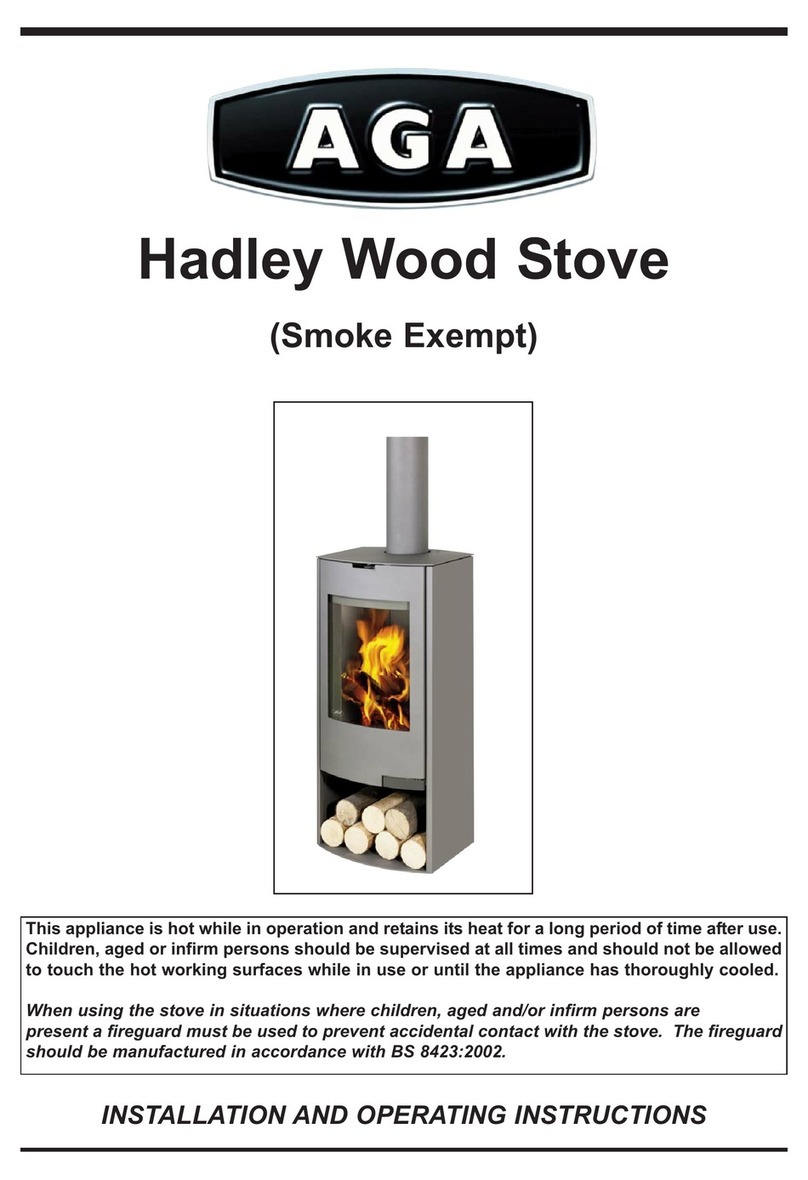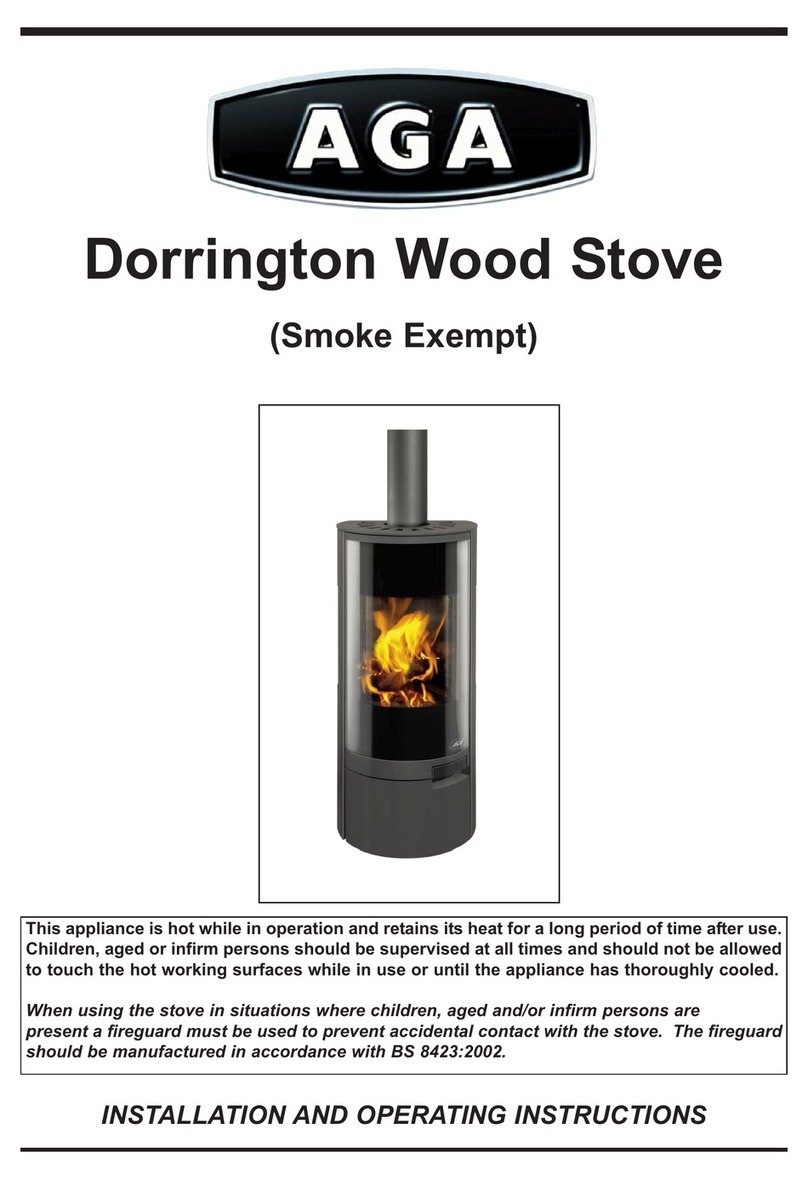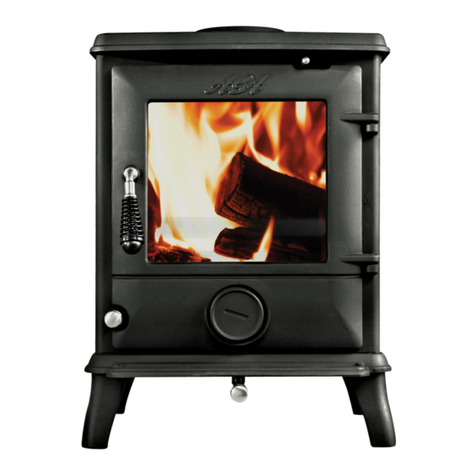4
If there is another appliance using air fitted in the
same or adjacent room, it will be necessary to pro-
vide an additional air supply.
All materials used in the manufacture of air vents
should be such that the vent is dimensionally stable,
corrosion resistant, and no provision for closure. Air
inlet grills should be positioned so they do not
become liable to blockage. The effective free area
of any vent should be ascertained before installa-
tion. The effect of any grills should be allowed for
when determining the effective free area of any vent.
Air vents direct to the outside of the building should
be located so that any air current produced will not
pass through normally occupied areas of the room.
An air vent outside the building should not be locat-
ed less than the dimensions specified within the
Building Regulations and B.S. 8303: Part 1 from any
part of any flue terminal. These air vents must also
be satisfactorily fire proofed as per Building
Regulations and B.S. 8303: Part 1.
Air vents in internal walls should not communicate
with bedrooms, bedsits, toilets, bathrooms or rooms
containing a shower.
Air vents traversing cavity walls should include a
continuous duct across the cavity. The duct should
be installed in such a manner as not to impair the
weather resistance of the cavity.
Joints between air vents and outside walls should be
sealed to prevent the ingress of moisture. Existing
air vents should be of the correct size and unob-
structed for the appliance in use. If there is an
extraction fan fitted in adjacent rooms where this
appliance is fitted, additional air vents may be
required to alleviate the possibility of spillage of
products of combustion from the appliance/flue
while the fan is in operation. Refer to B.S. 8303 Part
1.
Where such an installation exists, a test for spillage
should be made with the fan or fans and other
appliances using air in operation at full rate, (i.e.
extraction fans, tumble dryers) with all external
doors and windows closed.
If spillage occurs following the above operation, an
additional air vent of sufficient size to prevent this
occurrence should be installed.
Note:- If there is any work that is being carried out
that would effect the air quality supplied to the stove
such as sanding a floor or glueing linoleum etc. the
stove must be out of operation. The dust or vapours
may be a potential hazard, the air supply and local
area needs to be thoroughly ventilated before
putting the stove in operation again.
COMMISSIONING & HANDOVER
On completion of the installation allow a suitable
period of time for any fire cement and mortar to dry
out, when a small fire may be lit and checked to
ensure the smoke and fumes are taken from the
stove up the chimney and emitted safely to the
atmosphere. Do not run at full output for at least
24 hours.
On completion of the installation and commissioning
ensure that the operating instructions for the stove
are left with the customer. Ensure to advise the cus-
tomer on the correct use of the appliance with the
fuels likely to be used on the stove and warn them to
use only the recommended fuels for the stove.
Advise the user what to do should smoke or fumes
be emitted from the stove. The customer should be
warned to use a fire guard to BS 8423:2002 in the
presence of children, aged and/or infirm persons.
LOCATION
There are several conditions to be considered in
selecting a location for your stove.
A. Allowances for proper clearances to
combustibles of the stove and flue pipes.
B. The product must be installed on a non
combustible hearth with adequate load bearing
capacity.
C. Fluing considerations; length of flue, length of
horizontal run, flue termination.
D. Location within area to be heated.
FLOOR PROTECTION
It is recommended that this appliance is installed on
a solid, level, concrete base, a non combustible
hearth conforming to current Building Regulations
must extend to the front of the appliance.






























